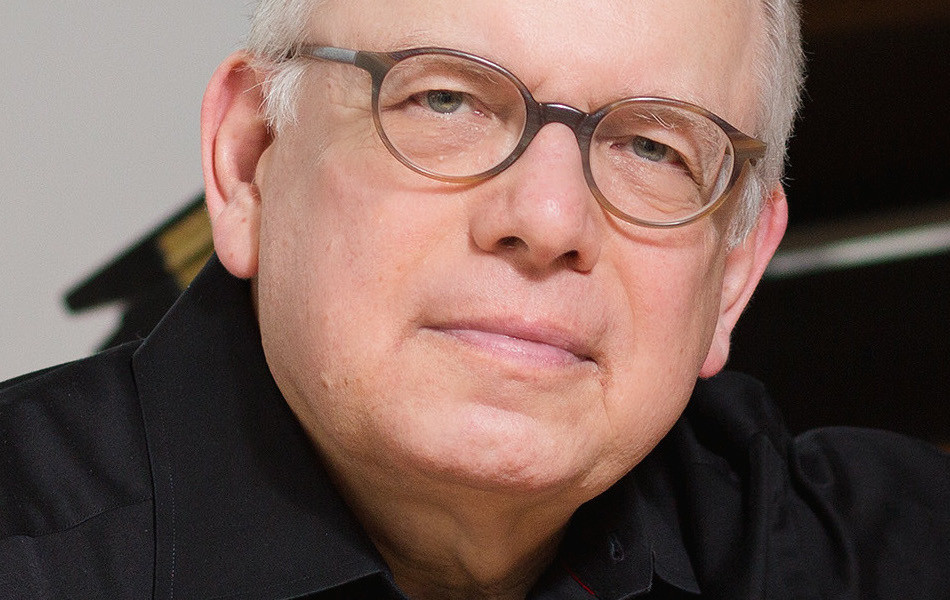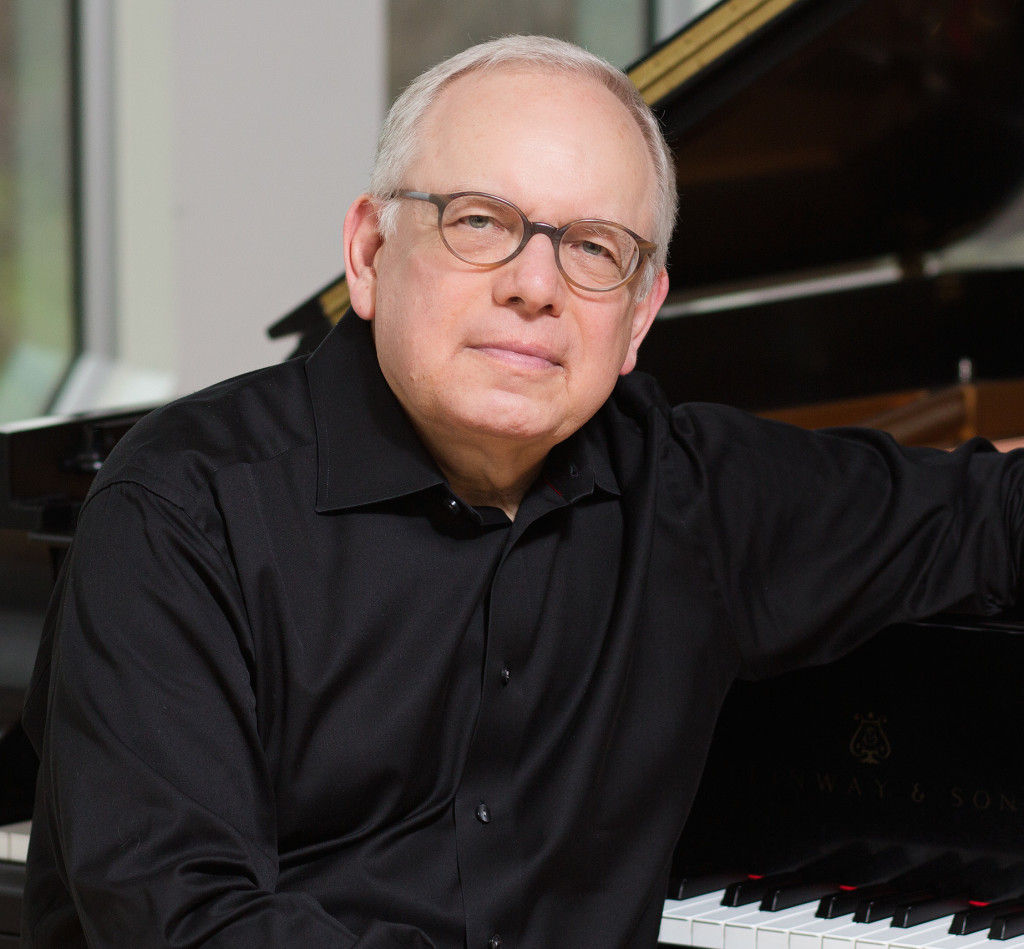A Window, Not a Wall: A conversation with pianist Peter Takács
I wouldn’t dare program or perform Beethoven’s monumental final piano sonata, Opus 111 in C minor, and I have two “good” hands. Master-pianist Peter Takács recently did so (January 14, 2016; Weill Recital Hall at Carnegie Hall) preceded by other “late-Beethoven” pieces, and he did it with a broken right hand.
Let’s let that sink in for a moment, shall we? At the time, he was in pain, but the exact nature of it was still undiagnosed. He had fallen while in New York City, the day after his previous “middle-Beethoven” recital in November 2015. The day of the fall was the same day as the massive terror attack in Paris—obviously a bad energy was at work that day.
Nevertheless, no trace of bad energy accompanied the two of us when we sat down for a French bistro lunch in midtown New York on Bach’s birthday, March 21, 2016. Call it a meeting of minds, if you will. I had been so transfixed by the intensely personal style of his playing in the three-concert Beethoven series that I just had to get to know more about the man and the musician.
Turns out we have a lot of points in common, even if separated by time and circumstance. I had almost attended Oberlin Conservatory, thinking to begin college one year early, but decided against it. My sophomore year would have been his first teaching year (of forty) there. Also, much earlier in his development, he attended the Paris Conservatoire, as did I years later. As the lunch progressed, we found many musical ideals and a lot of childhood peregrination in common, including emigration. His family (of Transylvanian Jewish descent) was persecuted in Romania for wishing to leave, eventually making their way to Vienna, Paris, then Milwaukee of all places.
Mr. Takács possessed obvious and prodigious gifts. As a four-year-old, he would observe the lessons and practice of his year-and-a-half older sister and learn everything she played, by ear, gleefully pointing out her mistakes all the while. His recital debut, in Bucharest, was at age seven, and some years of fruitful instruction (Russian tradition) were able to form him prior to the emigration. After his parents came out in the open about their desire to leave Romania, however, public performances by the young Peter were forbidden, and he was also kicked out of his school, having to take lessons clandestinely and attend a “secret” school for outsiders. What artists go through for their work! Post-graduate studies with legendary pianist Leon Fleisher probably were the most influential on Mr. Takács’ musical development—he speaks of his former mentor with reverence.
We spoke at length about the “heart” of the canonic Western tradition of piano (and chamber/orchestral) music, centering on the former Austro-Hungarian empire, and radiating outward to include some of eastern and north-central Europe. This is a broad over-simplification, of course, but upon examination, it seems to hold true with the exception of French repertoire—even there, after all, Louis XV married a daughter of the king of Poland, and Louis XVI the famous Marie Antoinette, an archduchess of Austria. Perhaps we would have had an “Archduchess” Trio if things had turned out differently.
Mr. Takács achieves two things (at least) simultaneously whenever he plays: 1) what I call “fidelity to the markings on the page,” and 2) a striking degree of personal feeling that makes it sound as if he himself were the creator, not just the re-creator. We agreed that he probably falls more in the C.P.E. Bach line (J.S. Bach’s best-known son), who said: “A musician cannot move others unless he too is moved. He must of necessity feel all of the effects that he hopes to arouse in his audience.”
Mr. Takács tells his students however, that they must be “generals, not soldiers,” taking the larger view of the area (music) instead of getting lost down in the details, which must all have been incorporated before, of course. His other analogy was to building a house. If you were merely laying bricks with no blueprint, things might get a bit messy or out of proportion. He suggests a zoom in/zoom out approach. And he added, there must be some level of technical control that won’t fall apart when one is giving way to the rapture of the moment.
We agreed that there really is no such thing as an urtext, that one must collect all the best editions and advice one can find and then make decisions based on taste, instinct, conviction, and knowledge. His (Mr. Takács) wonderful saying: “The score is a window, not a wall,” speaks precisely to the need to decipher what all those marks really mean, since notation is inherently a limitation on whatever the composer originally heard with his inner ear.
We both also agreed on sometimes teaching with programmatic imagery, especially for “absolute” music, pieces with abstract titles like “sonata,” etc. He often encounters some bewilderment among his younger students when he asks them: What is the affect of this piece? This led to a brief lamentation about the internet and its seductions toward superficiality: lots of information, but not so much knowledge, and even less wisdom.
Mr. Takács always tries to stimulate the students’ ears to pre-hear the sound they want to make, which must be different for every composer and period. His voice took on a very intense tone when saying that “Beethoven must never be played like Chopin.” That Beethoven’s sonority needs to be noble, singing, and serious at all times, never “perfumed.” Genre also must be considered: is the movement a dance form, song, chorale, imitation of orchestral texture? The inner conception of the tone must precede everything. One approach does not fit all at the piano.
Mr. Takács performed all the Beethoven sonatas over two seasons (1998/99 and 99/2000) at Oberlin. A small label specializing in historic piano reissues, contemporary pianists, and other good things (Cambria Music), heard about him, and offered to record the entire set. The box has done very well, and the sound is sumptuous, Mr. Takács having used the Boesendorfer Imperial concert grand, “the” modern Viennese piano par excellence. It also includes early works from the Bonn period (without opus) and Beethoven’s sole sonata for piano four-hands
When I asked him what was the most important thing that he had learned from his students, he opined that it was probably how to be more creative in approaches to each individual, finding the proper “key” to diagnose their issues and move them forward supportively, while accessing their creative sides and developing that.
We spoke of “desert island” composers, pieces, and movements. Of course, I told him I’d have to have a very well-equipped desert island: Hamburg Steinway concert grand and technician on hand and humidity control (so, I guess not so deserted!). His would be the second (final) movement “Arietta” of Beethoven’s Sonata No. 32 in C minor. If we were trapped there together, we agreed we could play the Schubert F Minor Fantasy (D. 940) forever.
Mr. Takács was presented in the three concert overview of Beethoven in 2015/16 by a novel series titled “Key Pianists” produced by Terry Eder, a pianist herself. He was the first virtuoso of what I hope will become a thriving annual series. The aim is to present wonderfully gifted pianists who might otherwise be overlooked by the “star system” that seems to decree who gets heard. The coming season heralds (so far) New York recitals by Ann Schein, Terry Eder herself, and Sara Davis Buechner.
An afternoon with a great humanist such as Mr. Takács is an irreproducible moment, as well as unforgettable. We agreed that the next lunch should be over some hearty mamaliga in one of the Romanian cafes in my neighborhood in Queens. I can’t wait.


